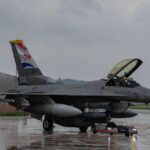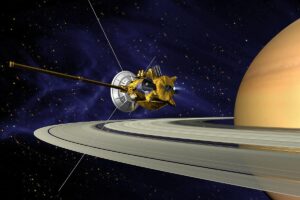WASHINGTON — More integrated military operations with AUKUS and Japan, two major projects that could alter the defense posture in the Indo-Pacific for years to come, received the stamp of approval from the U.S. Congress this week, as the annual defense policy bill was finalized between House and Senate lawmakers.
The compromise between each chamber’s version of the National Defense Authorization Act published Wednesday night kicked off plans to offer Australia nuclear-powered submarines under the three-way AUKUS pact with the U.K. It also requires the secretary of defense to modify the U.S. military’s command structure in Japan to complement Tokyo’s new Permanent Joint Headquarters (PJHQ), which will oversee all three branches of the Self-Defense Forces.
Congress is expected to approve the bill next week. It would then be sent to President Joe Biden for his signature. The NDAA sets the fiscal 2024 defense budget at $874.2 billion.
Last year’s NDAA only referred to AUKUS as a new mechanism of multilateral cooperation, in similar light to the Quadrilateral Security Dialogue, or Quad, between the U.S., Japan, India and Australia.
This year’s bill lays out specific steps the U.S. government should take. First, it would have the secretary of state designate a senior adviser to coordinate all activities related to AUKUS. “That individual may not hold any other position concurrently while serving as the senior adviser,” the bill says.
Currently, the State Department’s AUKUS measures are led by Bonnie Jenkins, the undersecretary for arms control and international security. She leads the three bureaus of arms control, compliance and verification, and international security and nonproliferation.
The senior adviser will have an adequately sized staff and lead a task force that meets regularly, the bill stipulates. The bill also requires the designation of a senior civilian official at the Pentagon to be responsible for AUKUS activities.
While authorizing the transfer of up to three Virginia-class submarines to Australia, the NDAA also tasks the secretary of defense with submitting a plan to strengthen the industrial base in the U.S. so as not to dent submarine-production capacity.
On Japan, the bill requires the secretary of defense to submit by June a report on enhancing security cooperation with Tokyo. The report should include “an analysis of the feasibility and advisability of modifying United States command structures in Japan,” in part to “complement similar changes by the Self-Defense Forces of Japan.”
This language refers to Japan’s new permanent joint command, currently being established, which will oversee all three SDF branches — air, ground and maritime. The creation of a PJHQ was written in Japan’s National Defense Strategy published December last year, to unify command and carry out joint domain operations.
There has been debate over the PJHQ’s counterpart on the U.S. side. Under the current structure, the United States Forces Japan (USFJ), based at Yokota Air Base in western Tokyo, is the umbrella organization for all American forces in Japan. It is commanded by a three-star air force general, who doubles as the commander of the Fifth Air Force. While it is responsible for managing the U.S.-Japan security alliance, USFJ is not in the operational chain of command of the U.S. Navy’s massive 7th Fleet based in Yokosuka, Kanagawa prefecture, which reports to the U.S. Pacific Fleet in Hawaii.
“This direction from Congress is welcome because the U.S. command arrangement in Japan is a legacy of a bygone era when threats to Japan were far away. U.S. Forces Japan is not even a joint operational command,” said Christopher Johnstone, the Japan chair at the Center for Strategic and International Studies.
Given regional threats, and Japan’s new defense strategy, it is time that this changed, according to Johnstone.
“Today the PJHQ’s counterpart is at INDOPACOM in Hawaii. That’s neither realistic nor befitting of the ally Japan is becoming. An upgraded USFJ could still be subordinate to INDOPACOM, while providing a day-to-day counterpart to the PJHQ and an ability to coordinate certain activities with Japan,” he said.
The Washington-based think tank Sasakawa Peace Foundation USA has been conducting an 18-month study to explore beneficial changes to U.S.-Japan command and control structure.
James Schoff, a senior director at Sasakawa and leader of the project, said, “The consensus is that we do need a Japan-based U.S. element that is a real-time counterpart to the PJHQ.”
Rather than creating a new entity alongside USFJ, the study group prefers revamping the current structure by adding a hundred or so staff to the existing 140 members, Schoff said.
At a Stimson Center event in Washington on Thursday, Gen. Koji Yamazaki, the former chief of staff of the Self-Defense Forces Joint Staff, said, “The U.S. Indo-Pacific Command oversees operations in an extremely large area, which includes Japan, the Philippines and India. But we are focused on the defense of Japan, so there is a mismatch.”
He called for the establishment of a U.S. joint-domain headquarters that would be a counterpart to the PJHQ, adding that coordinating command and control with Washington will be the top priority for the PJHQ when it is established.
A congressional staff member told Nikkei Asia that the wording in the NDAA paves the way for a deliberation on this matter, so that the budget for the new organization would be included in next year’s defense budget.
Source : NikkeiAsia
















